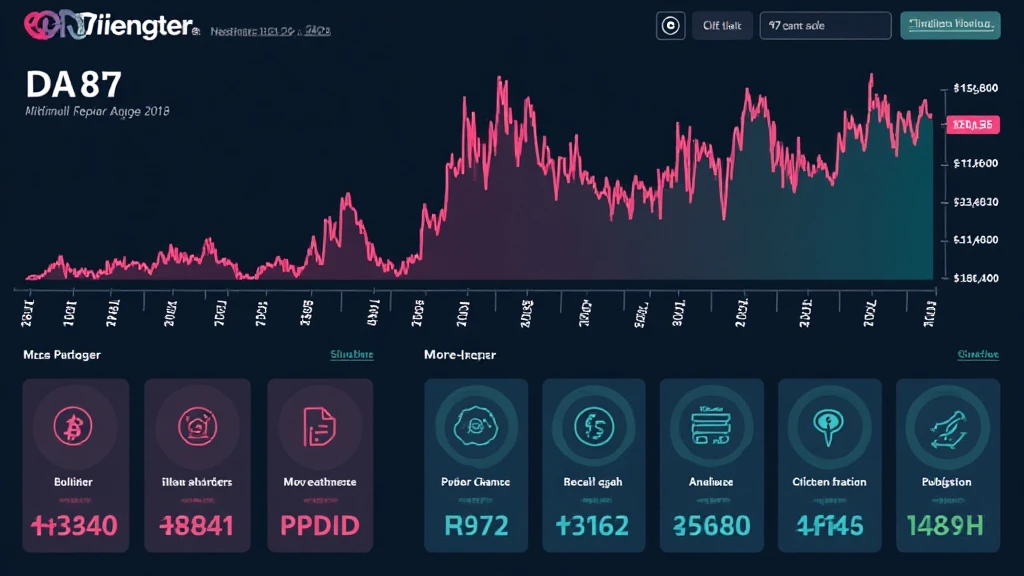Bitcoin Market Sentiment Analysis: Understanding Trends for Better Trading
With over $1 trillion lost to poorly informed trading decisions in the past decade, accurately gauging Bitcoin market sentiment has become essential for investors and traders alike. Whether you’re a seasoned trader or just starting, understanding how sentiment can impact market movements is crucial. In this comprehensive guide, we’ll explore what market sentiment means, the factors that influence it, and how to leverage sentiment analysis for successful trading in Bitcoin.
What is Market Sentiment?
Market sentiment refers to the overall attitude of investors towards a particular market or asset. It is the emotional response to news, economic reports, and market changes, often described as being either bullish (optimistic) or bearish (pessimistic). Using market sentiment analysis allows traders to understand the attitude of the market, potentially predicting price movements before they happen.
- Positive Sentiment: When the majority of investors feel optimistic about Bitcoin’s future performance, leading to a price increase.
- Negative Sentiment: When investors are concerned about market conditions, leading to price declines.
Factors Influencing Bitcoin Market Sentiment
Several factors can influence Bitcoin market sentiment:

- News Events: Major headlines regarding regulations, technological advancements, or market crashes can sway investor sentiment.
- Market Trends: Bull markets often create positive sentiment, while bear markets lead to negative outlooks.
- Social Media Influence: Platforms like Twitter and Reddit are powerful in shaping Bitcoin sentiment, as trends and influencer opinions can spread rapidly.
- Technical Indicators: Traders often use metrics like moving averages and RSI (Relative Strength Index) to inform their sentiment analysis.
Real-World Examples of Sentiment Impact
To illustrate the effect of sentiment on Bitcoin prices, let’s consider two examples:
- Positive Example: In late 2020, Bitcoin experienced a significant price surge as institutions like MicroStrategy and Tesla began investing heavily in Bitcoin. The positive sentiment surrounding institutional adoption led to an all-time high of approximately $64,000 in April 2021.
- Negative Example: Negative sentiment hit Bitcoin hard in May 2021 when concerns surrounding China’s crackdown on cryptocurrency mining were reported, leading to a price drop of over 50% within weeks.
How to Conduct Sentiment Analysis
Conducting sentiment analysis on Bitcoin involves a combination of qualitative and quantitative techniques. Here are some strategies:
- Social Media Analysis: Tools like Google Trends and social media analytics help track the volume of searches and discussions around Bitcoin, indicating sentiment shifts.
- Sentiment Indicators: Utilize websites like the Fear & Greed Index to gauge the general market mood. A value below 25 indicates extreme fear and potentially signals a buying opportunity.
- News Analysis: Regularly follow cryptocurrency news outlets and assess the tone of articles to understand how the media is portraying Bitcoin.
Case Study: Vietnam’s Cryptocurrency Market Sentiment
In Vietnam, the cryptocurrency landscape has rapidly evolved, with a user growth rate of over 90% year-on-year. Understanding local market sentiment is essential given these dynamics. Amid regulatory uncertainty, community sentiment often sways between excitement and fear, significantly impacting trading volume in the region.
As the Vietnamese government begins to establish clearer guidelines for digital assets, positive sentiment may rise, potentially unlocking new opportunities for investors.
Tools to Analyze Market Sentiment
Several tools can assist traders in conducting market sentiment analysis:
- Glassnode: Offers blockchain data insights for gauging on-chain sentiment.
- Twitter Sentiment Analysis: Tools like Sentiment Analysis API can track tweets mentioning Bitcoin to analyze overall public sentiment.
- Crypto Fear & Greed Index: A composite index measuring market sentiment by analyzing sources such as volatility, market momentum, social media, and surveys.
How to Use Sentiment Analysis for Trading
Leveraging sentiment analysis effectively can enhance your trading strategies:
- Contrarian Approach: If sentiment indicators show extreme greed, it might be the perfect time to consider selling. Conversely, if markets are fearful, it may indicate a buying opportunity.
- Setting Stop-Losses: By understanding market sentiment, traders can better determine appropriate levels for setting stop-loss orders, minimizing potential losses.
- Combining with Technical Analysis: Sentiment analysis complements technical analysis. Using both methods can lead to more informed trading decisions.
Risks of Relying on Market Sentiment
While market sentiment analysis is a valuable tool, it carries inherent risks:
- Herd Mentality: Traders often get swept up in the prevailing market mood, leading to impulsive trading decisions.
- Market Manipulation: Influencers and media can shape sentiment, leading to artificial price movements.
- Short-Term Focus: Sentiment often reflects short-term feelings that can reverse unexpectedly, causing holdovers to incur losses.
The Future of Bitcoin Market Sentiment Analysis
As we move further into 2025, adopting advanced analysis techniques will become increasingly critical. The rise of AI and machine learning technologies means that sentiment analysis tools will become more sophisticated, allowing traders to respond even faster to market changes.
In the Vietnamese market, with an increasing number of cryptocurrency investors, sentiment analysis will provide a competitive edge, especially as local regulations mature and foster a more stable trading environment.
Conclusion
Understanding Bitcoin market sentiment analysis is fundamental to successful trading. By leveraging social media insights, news articles, and sentiment indicators, traders can enhance their predictions and decision-making processes. Remember to consider both the opportunities sentiment provides and the risks involved. Sentiment shifts can happen quickly, so staying informed is crucial to navigating the volatile world of Bitcoin trading.
As we’ve seen, whether in the global landscape or the vibrant Vietnamese market, market sentiment plays a pivotal role in shaping the future of Bitcoin trading. Equip yourself with the right knowledge and tools, and let sentiment analysis guide you in your trading journey.
For more insights on cryptocurrency and Bitcoin market trend analysis, visit cryptocoinnewstoday.





